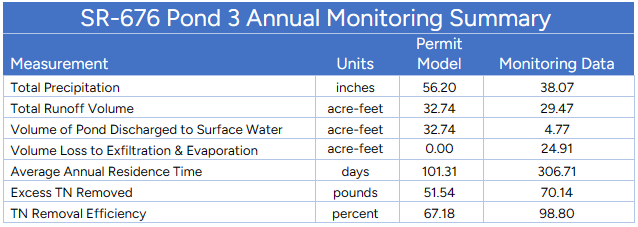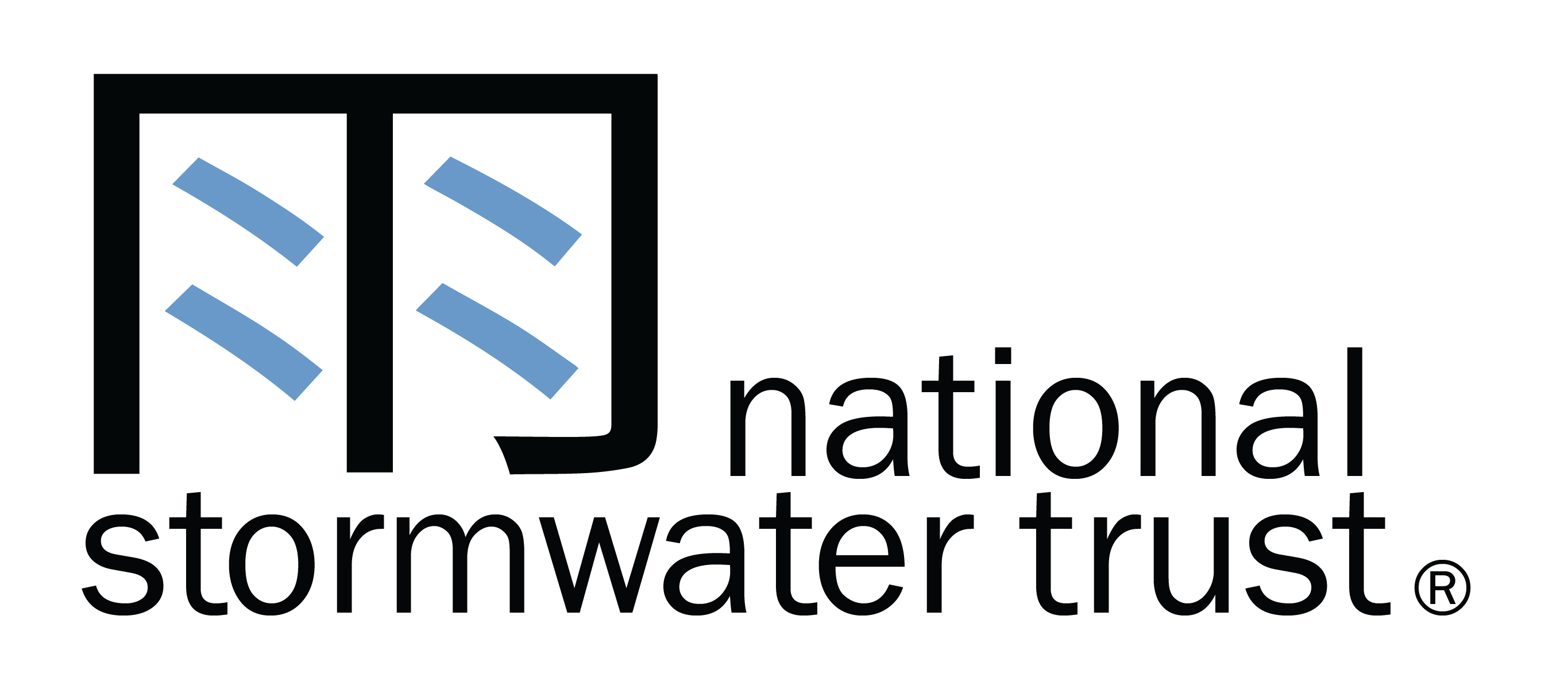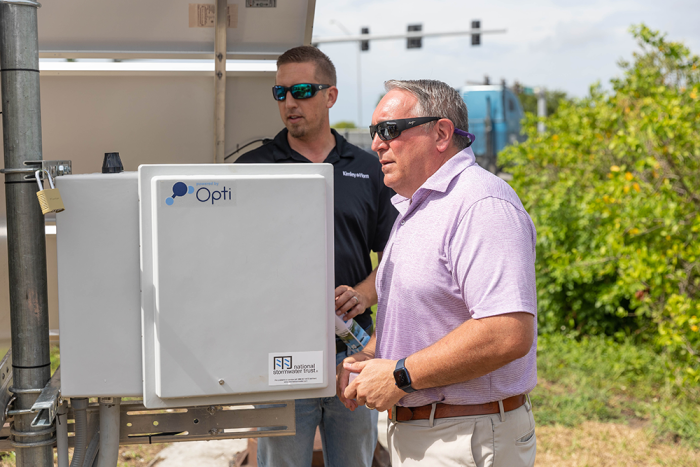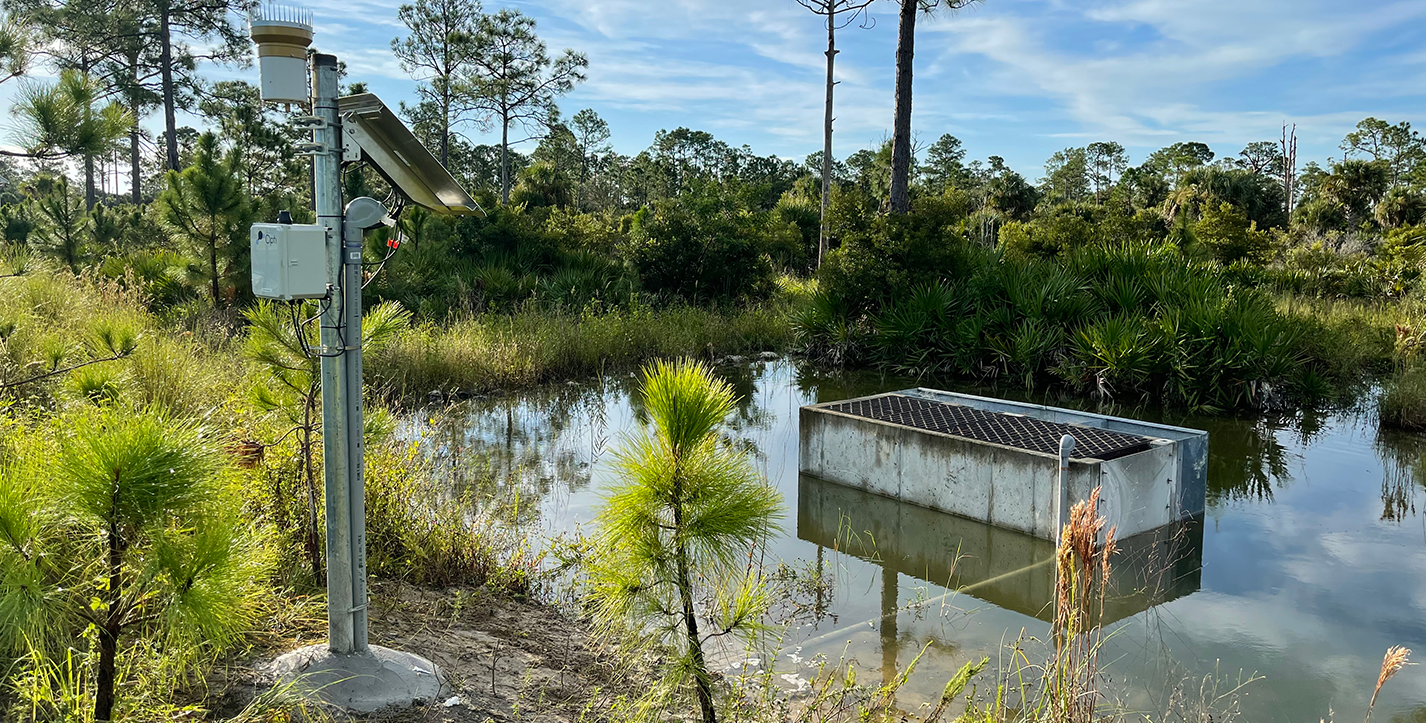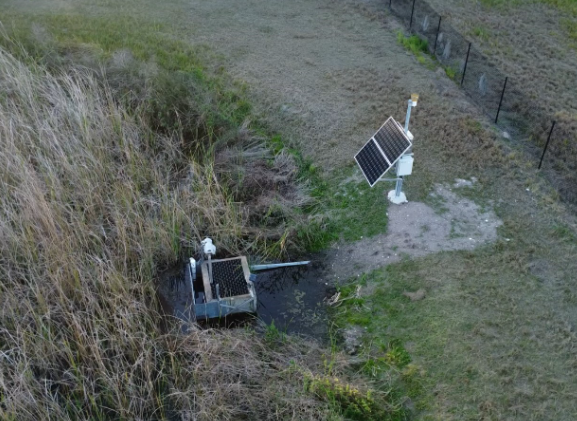
Real-time water level and rain sensor data enable NST engineers to monitor a Smart Pond’s actual performance compared to predicted performance. This analysis is performed and submitted in an annual report to the Water Management District each year to confirm that each operational Smart Pond achieves the permit-required performance.
NST retrofitted an FDOT pond on SR 676 in Hillsborough County with Continuous Monitoring and Adaptively Controlled (CMAC) equipment in December 2022. The pond was originally permitted and constructed as a wet detention facility as part of FDOT’s 2010 SR 676 road widening project. The facility receives runoff from an 11.57-acre drainage basin consisting mostly of roadway and commercial land uses.
After the first full year of operation as a Smart Pond, the annual monitoring data demonstrated more than double the treatment efficiency prior to its upgrade.
As initially designed and constructed, the stormwater facility provided the required 0.55 inches of wet detention treatment for the road project’s added impervious area. The permitted CMAC modification increased the efficiency of the treatment facility to a predicted treatment efficiency of 67.2% for Total Nitrogen removal, resulting in 2.02 acre-feet of additional equivalent treatment volume.
The CMAC monitoring system tracks and records rainfall, pond elevation, pond volume, and valve opening data in real time. The initial 12 months of operational data ending in December 2023 demonstrates the pond site received a total of 38.07 inches of rain and fully captured (retained without discharge) 87.5% of the annual rainfall volume. While the total rainfall was less than predicted, the pond still significantly outperformed its modeled and permitted TN removal efficiency as shown in the following summary table:
